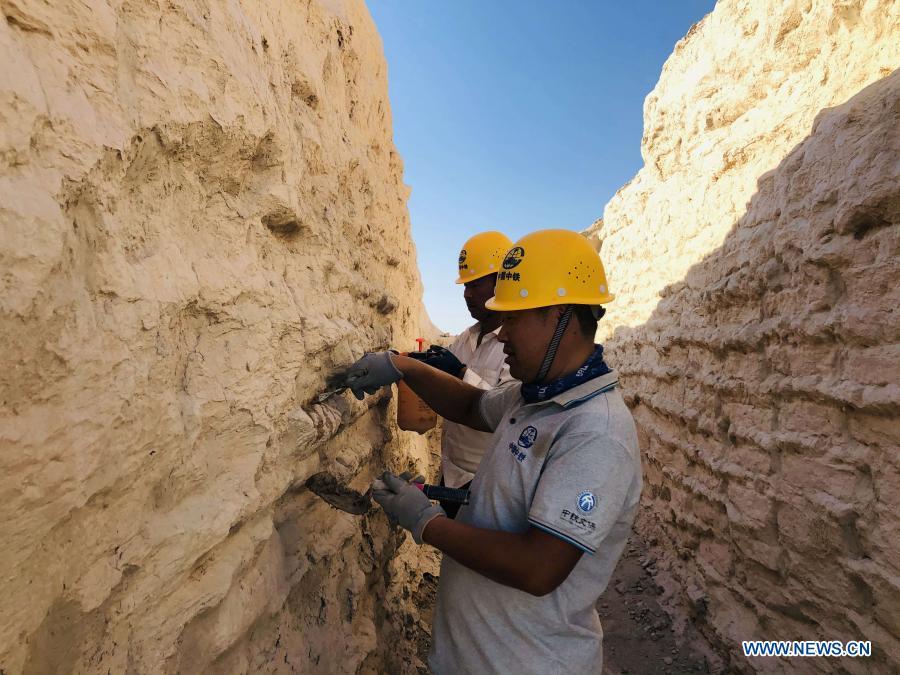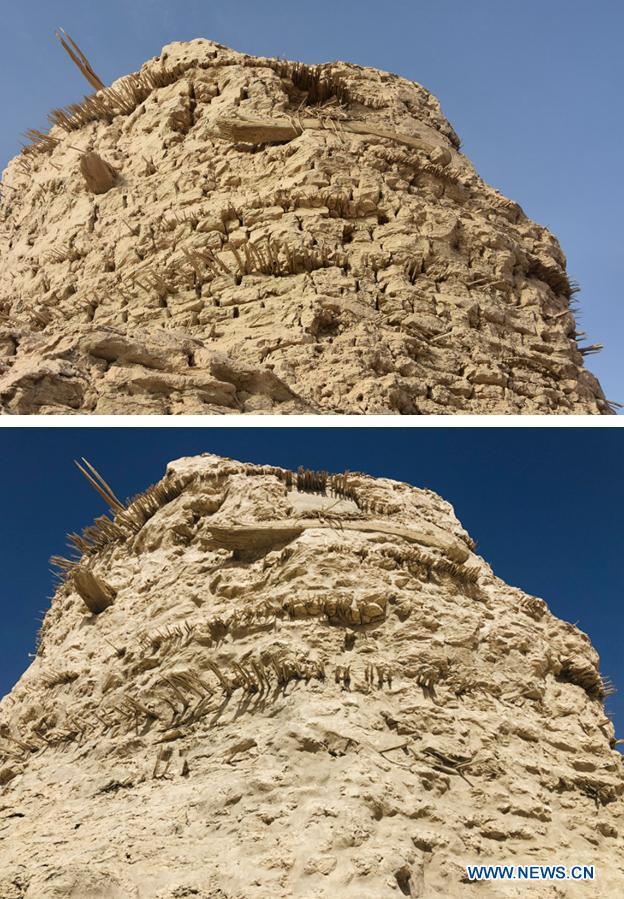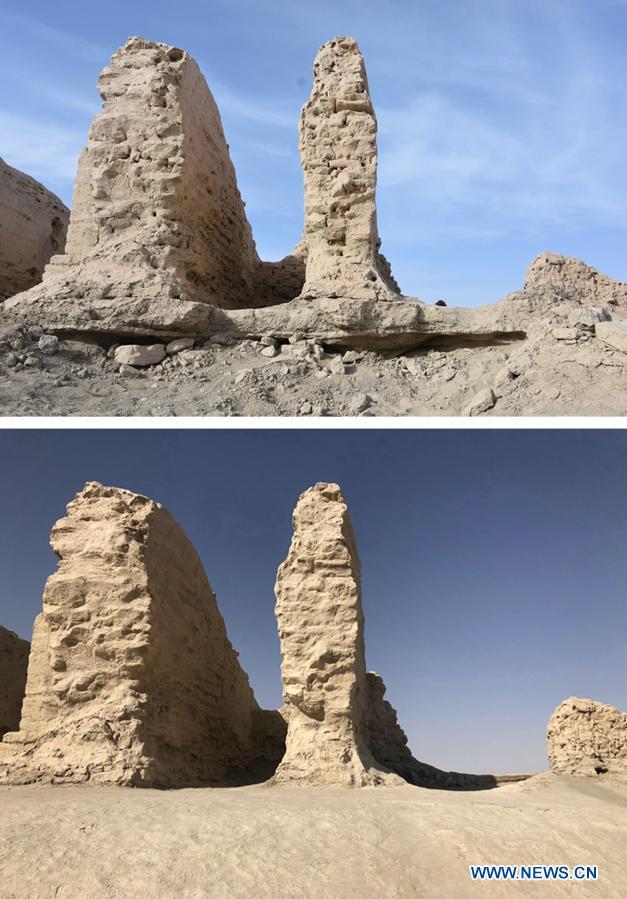Project preserving 'Oriental Pompeii' accomplished in NW China
Xinhua
1607005128000

Photo taken on Oct. 20, 2020 shows a member of cultural relics protection staff creating digital file with a 3-D laser scanner for ruins of a pagoda at the site of ancient Loulan in the wilderness of Ruoqiang County, northwest China's Xinjiang Uygur Autonomous Region. A project launched in June 2020 to preserve the site of ancient Loulan, dubbed "Oriental Pompeii," was accomplished on Nov. 30. Loulan was a prosperous settlement built around 2,000 years ago to serve traders transiting through the ancient Silk Road. However, with time, references to Loulan mysteriously disappeared. (Northwest Research Institute Co., Ltd. of CREC/Handout via Xinhua)

Photo taken on Sept. 12, 2020 shows cultural conservationists reinforcing ruins of three rooms at the site of ancient Loulan in the wilderness of Ruoqiang County, northwest China's Xinjiang Uygur Autonomous Region. China's cultural conservationists have completed emergency repair works on the ground remains believed to be ruins of the ancient Loulan kingdom in northwest China's Xinjiang Uygur Autonomous Region. Loulan was a prosperous settlement built around 2,000 years ago to serve traders transiting through the ancient Silk Road. However, with time, references to Loulan mysteriously disappeared. (Northwest Research Institute Co., Ltd. of CREC/Handout via Xinhua)

In this combo photo, the upper half taken on Nov. 14, 2019 shows part of ruins of a pagoda before a reinforcement project at the site of ancient Loulan in the wilderness of Ruoqiang County, northwest China's Xinjiang Uygur Autonomous Region; the lower half taken on Oct. 20, 2020 shows the same part of the pagoda after the reinforcement project. China's cultural conservationists have completed emergency repair works on the ground remains believed to be ruins of the ancient Loulan kingdom in northwest China's Xinjiang Uygur Autonomous Region. Loulan was a prosperous settlement built around 2,000 years ago to serve traders transiting through the ancient Silk Road. However, with time, references to Loulan mysteriously disappeared. (Northwest Research Institute Co., Ltd. of CREC/Handout via Xinhua)

In this combo photo, the upper half taken on Nov. 14, 2019 shows part of ruins of three rooms before a reinforcement project at the site of ancient Loulan in the wilderness of Ruoqiang County, northwest China's Xinjiang Uygur Autonomous Region; the lower half taken on Oct. 20, 2020 shows the same part of three rooms after the reinforcement project. China's cultural conservationists have completed emergency repair works on the ground remains believed to be ruins of the ancient Loulan kingdom in northwest China's Xinjiang Uygur Autonomous Region. Loulan was a prosperous settlement built around 2,000 years ago to serve traders transiting through the ancient Silk Road. However, with time, references to Loulan mysteriously disappeared. (Northwest Research Institute Co., Ltd. of CREC/Handout via Xinhua)

In this combo photo, the upper half taken on Nov. 11, 2019 shows part of ruins of a pagoda before a reinforcement project at the site of ancient Loulan in the wilderness of Ruoqiang County, northwest China's Xinjiang Uygur Autonomous Region; the lower half taken on Oct. 20, 2020 shows the same part of the pagoda after the reinforcement project. A project launched in June 2020 to preserve the site of ancient Loulan, dubbed "Oriental Pompeii," was accomplished on Nov. 30. Loulan was a prosperous settlement built around 2,000 years ago to serve traders transiting through the ancient Silk Road. However, with time, references to Loulan mysteriously disappeared. (Northwest Research Institute Co., Ltd. of CREC/Handout via Xinhua)


